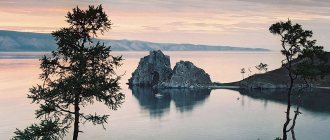- Essays
- Nature
/
Mountains have always amazed me with their power. Mountains for me are incredible beauty and indescribable scale. The mountains are fraught with some kind of secret, some kind of mysticism. It’s not for nothing that since ancient times, thinkers and poets went to the mountains to find their muse. Walking in the mountains, a person feels truly happy and carefree. In the mountains, the wanderer “becomes” a bird, becomes free and wise.
This year I was lucky enough to go on a trip with my whole family - to the mountains. Together we visited a very famous place - the mountains that hosted the 2014 Olympic Games. It was our most amazing trip.
When you see the edge of the mountains from a distance, there is no such feeling of delight. But as soon as you drive up to the foot, you immediately understand all the power, the whole scale. You look up, but the tops are not visible at all. When I touched the mountain with my hand, I felt delighted - after all, these mountains are many years old, they have seen so many tourists, so many events, so many wars. They stand quietly and peacefully, only absorbing the whole story, unwittingly becoming participants in all these events.
On this trip I went skiing for the first time. There are several peaks on the territory of the Krasnaya Polyana complex, and you can get to the top by lift. The climb is inexpensive, but it is more profitable to immediately buy a card for the whole day.
When you leave the cabin you immediately receive a charge of delight, a charge of strength. The air at the top is thin, you breathe differently here. When you see this stunning landscape, all thoughts fade into the background. For many kilometers ahead everything is strewn with fluffy snow. You look ahead, but there is no end to this beauty in sight. There are only mountains and incredible tranquility ahead. I am still impressed by what I saw.
In the mountains we become closer to the stars, to the sky. If you climb high into the mountains you can see how the clouds touch the ground. It even seems that you can reach these feather pillows with your hand.
If you rise higher and higher, the peaks of the mountains seem to join together, as if they are piled on top of each other. The tops become one. If you look into the distance, you can only see the outlines of these powerful guards.
Man is powerless in these places. The power of the mountains is capable of both inspiring the newcomer and breaking the unworthy.
I really want to return to the mountains in the summer and get acquainted with their opposite side, with the tender and blooming part of these great stone blocks.
V. Vysotsky “The only thing better than mountains can be mountains that you have never been to before.”
Other topics: ← Journey of a drop of water↑ NatureMan and nature →
`
Popular writings
- Essay Caring for Pets Pets
require careful care. A person who is going to take a small four-legged friend into his family must be aware of his responsibility for this creature - Essay about animals (2, 3, 4, 5, 6, 7, 8 grades)
I really love animals. It’s good that my parents support me in this love and there are always furry pets in our house. Now I will tell you which animals I like the most. - Sayings about fathers and children
The eternal theme of parents and children will always be relevant, since life is a cycle. At one time we are children, a year later we are already parents. The mother is by far the most important person for the child
Essay on the topic description of mountains
Here is my heart. This son's heart lives in the mountains, in his father's land. My heart is filled with everlasting love, I love you forever, mountain people! R. Gamzatov. Yes, I live in a beautiful country, which all the peoples of the world now know about. Dagestan! This is my native land! The place where I live is where my relatives and friends live. The word Dagestan has been known since the 17th century and means “mountainous country,” because most of the republic is occupied by mountains. How much has been written and said about our native land! I often think: why did great writers in their poems so often turn to the theme of their native land? Probably because my father’s house is located there, my parents spent their childhood there. For me there is no place more dear and more beautiful than my father’s home, our land. What do I even know about our region, about its history? I know that the house we live in was built by my great-grandfather with his own hands. The history of our region is closely connected with the history of our ancestors. I think a person who does not know his history does not know himself. Dagestan and a multinational country. Even in ancient times, there were legends about the extraordinary multilingualism of the Caucasus. This fact was invariably emphasized by the Greeks and Romans, Arab, Persian and European geographers of the Middle Ages, citing numbers from seventy to three hundred. Arab historian and traveler of the 10th century Masudi Fr. And today, like ten centuries ago, more than half of the languages represented in the Caucasus come from Dagestan. When I talk about Dagestan, I imagine the azure waters of the Caspian Sea, which carry coolness and moisture; I imagine harsh, austere mountains, piercing with their peaks the soft surface of the silver sky. I see the proud, honest, hardworking people who inhabit it, and I remember the rich, unique in their originality, traditions of our ancestors. What's good about Dagestan? Why do I love him? These are the questions I will try to answer in my essay. Today, when my grandfather was sitting at the table and drinking tea, reading a newspaper, I asked him to tell us about our native land. He told me that even before the war, all my ancestors lived in the mountains. This was their home, where every bush, every blade of grass fed them. But life became difficult because there was not enough bread, since most of the men went to the front. “Without mountain people there are no mountains,” my grandfather said. But in cold times, people were forced to move to the plain. Now my grandfather and I often go to our native mountains in the summer to the village of Yaljukh. A mountain road runs through a narrow valley called a gorge. The highway seems like a thin light ribbon against the backdrop of the mountains. The rest of the space, as far as the eye can see, is occupied by huge mountains, their slopes and peaks. Above them is only the sky. Closer to the road, the mountains are not sharp peaks, but rounded, as if oval. They are densely overgrown with forest. From a distance it may seem that these are the thick backs of huge shaggy bears, and their skins are green. But the fur on the bears’ backs is centuries-old spruce and pine trees tens of meters high. When you drive along the highway, the bears' backs almost close in front of the car. And further away, real high-altitude peaks rise in a chain. These peaks form strange gigantic figures. In autumn they are covered with white snow, which disappears only at the end of spring. The highest mountains are guardians of glaciers, deposits of crystal clear frozen water. This is why some peaks never take off their white caps of snow and ice. From here the glaciers look like just white caps, but if you climb the mountains, it becomes clear that they stretch for many kilometers. If you break off a “piece” from a glacier, it will weigh thousands of tons. The peaks pile up one after another, and there is no end to them. Far on the horizon the mountains themselves are no longer visible, but only their outlines. It’s as if bluish ghosts are standing one after another against the sky. In the mountains a person is closest to the sky. Indeed, on the slopes of the mountains you can even see stray clouds. They hang so low that it seems you can jump and reach them with your hand. Where else can you see how the sky becomes lower than the earth, if not in the mountains? Left alone with my thoughts, I think about the mountains. I look at them and compare them with people. Like people, mountains sometimes look harsh, sometimes gentle, sometimes kind. And sometimes it seems to me that they are laughing. Yes, Dagestan has something to be proud of. Our great ancestors were distinguished by their courage and fearlessness. I begin to remember folk heroes who lived in the mountains and had enormous strength. I remember the legend about Sharvili, because according to the description it looks like a mountain. People from all over the world come to Dagestan to climb to the top of Mount Shalbuz. They say that people come here to this holy place to ask the saints for help. And often their requests are fulfilled. This again suggests that mountains are an integral part of man. Far beyond the borders of our republic, the names of national heroes - Shamil and Khadzhimurat - are known. The names of our compatriots - the heroes of the Great Patriotic War Magomed Gadzhiev, Yusup Akayev, Saadul Musaev and many of my fellow villagers - are covered with unfading glory. Of those who went to the front, few returned. We have no right to forget the names of those who gave their lives for our bright future. We are proud of them, we admire their fearlessness, determination, and love for their people and Motherland. We have someone to look up to, someone to imitate, and this, I think, is very important for the younger generation. Dagestan is also a republic with an ancient history and a rich, original culture. The history of the mountain peoples was not written with a pen - it was written with daggers, sickles, horse hooves, and gravestones. Centuries have passed. My Dagestan has blossomed and become more beautiful. And today the Republic of Dagestan is like a gem on the map of Russia. People from all over the world come here to study the history of our country and visit the Narynkala fortress. Our inaccessible mountain peaks are a paradise for lovers of mountaineering and extreme sports, ancient fortresses, ancient temples, the gentle Caspian Sea - the largest lake in the world - all this is Dagestan! But the main value and pride of the North Caucasus is, of course, people. The Caucasus is famous for its world-famous athletes, artists, scientists and politicians. And how many poets and writers the Dagestan land has raised. Here are just a few of them. Rasul Gamzatov, a native of the village of Tsada, Khunzakh region of Dagestan. Famous Avar poet, writer, publicist, political figure. People's poet of the Dagestan Autonomous Soviet Socialist Republic, Hero of Socialist Labor, Lenin and Stalin Prize laureate. Over the years of his work, Rasul Gamzatovich Gamzatov wrote hundreds of beautiful works and became one of the most famous poets of the Caucasus. Rasul Gamzatov is the author of many songs that are dearly loved by our people, but undoubtedly the main song of his life was “Cranes” to the music of Oscar Feltsman. My Dagestan is the region with the highest density of Olympic champions per square kilometer in the world. Sports are treated with great respect here. Football and strength sports brought Dagestan recognition on the world stage. Undoubtedly, the crown of Dagestan's sporting achievements was the victory of Elena Isinbaeva, a two-time Olympic champion in pole vaulting. Elena's father is Gadzhi Gadzhievich Isinbaev, by nationality - Tabasaran (Tabasaran is one of the mountain peoples of southeastern Dagestan). This year Elena was recognized as the most successful sportswoman in Russia in terms of sports and finance. And who doesn’t know the famous dance “Lezginka” The Lezginka dance is an echo of ancient pagan rituals, one of the main elements of which was the image of an eagle. Lezgi - Eagle. So the word Lezginka can be translated as eagle dance. Therefore, every highlander is obliged to learn Lezginka from childhood and show his strength and masculinity in it. Dagestan is a very hospitable country with its own customs and traditions. Of the ancient traditions of the mountaineers, perhaps the most striking thing for a person visiting Dagestan for the first time is the custom of hospitality. Dagestan proverbs say: “May the day never come when a guest does not come to the house!” According to long-established customs, every highlander considered it an honor to receive a guest with dignity at any time of the day or night. The Dagestanis had the following custom: when they sat down to have lunch or dinner, the food was divided equally among family members and an extra portion was set aside in case a belated guest suddenly arrived. The guest should not need anything - this is the unwritten custom of the mountaineers. A highlander will never let a guest leave the house with empty khurjins. He puts bread, meat, cheese, and some kind of gift in them. In the Lak region, before a guest left, a jug of spring water was placed at the porch, which meant: “May the journey be happy, may the guest not experience thirst along the way.” When I, having traveled to many countries, tired, returned home from the road, bending over me, asked Dagestan: “Have you fallen in love with the distant land?” I climbed the mountain and from that height, sighing with all my heart, I answered Dagestan: “I have seen many lands, but you are still the most beloved in the world.
Formation theory
Throughout the history of their development, people have put forward a variety of theories about how exactly the mountains of the world were formed. At first these were myths, legends and tales, then the versions began to be more substantiated. For example, it has been suggested that mountain systems arose due to the movement of matter under the ocean floor, causing the arching of its surface, which causes the heaving of the earth's crust along the margins of the ocean.
This hypothesis did not explain in any way the presence of mountain systems inside the continent. Then they considered the version that the Earth is constantly decreasing in volume, and this happens in leaps and bounds and leads to deformation of the surface, where folds are formed, some of which rise above the surface, and the other goes downhill.
Later, the idea emerged that the mountain system was formed during continental drift. The idea was not bad, but it did not explain the reason for the movement of the continents, so it was forgotten. Instead, another hypothesis arose, suggesting that there are currents inside the Earth that cause the rise and fall (going downhill) of the earth's crust, affecting the topography of the planet. Despite the fact that many people liked the idea, no scientific evidence was found to support it.
The modern hypothesis of the formation of mountains arose in the middle of the last century, when the movement of lithospheric plates was proven, during the collision of which a thinner plate goes under the neighboring one, forming hills on the earth's surface. This theory was combined with previous versions, it explained a lot and was accepted as the main one.
Age of the mountains
Based on the theory of the movement of tectonic plates and soil analyses, it was found that each mountain system was formed at one time. The age of young ranges ranges from 50 to 80 million years, while old mountain systems appeared more than a hundred million years ago (for comparison, the age of our planet is about four and a half billion years).
Young mountain ranges (Rocky Mountains, Himalayas) are interesting because their internal processes are still developing.
For example, due to the constant collision of the Indian and Asian plates, the high mountains of the Himalayas grow by five centimeters per year. This process is always accompanied by earthquakes, and in some cases – volcanic eruptions. A young, growing mountain system is easily recognizable by its sharply defined relief, consisting of alternating peaks and protrusions, the sharp shape of the peaks, and the presence of very steep and high slopes that complicate both the ascent and descent from the mountain.
The ancient mountain system differs from the younger one in that all processes inside it have long ceased, while external processes that cause erosion continue to affect the surface of the Earth. An interesting fact: geologists have discovered more than one area on the plains where there was previously a mountain system, from which only roots remained, securely hidden under a thick layer of sedimentary rocks. The most ancient hills of the Earth were recognized as the remains of mountains that are located in the Hudson Bay area: they appeared almost simultaneously with our planet.
As for the ancient mountains, which time has not erased from the face of the Earth (for example, the Ural or Scandinavian), they can be recognized primarily by their height, not exceeding one and a half thousand meters, gentle slopes, and also by severe erosion. If in young mountains water streams flow in narrow gorges, then the rivers of an old mountain flow along a well-defined wide river valley.
It is not uncommon for older mountain ranges to include younger formations. For example, the Rocky Mountains, which appeared as a result of a tectonic shift from 80 to 50 million years ago, are a young part of the Western Cordillera, which began to form more than 120 million years ago. It should be noted that the Rocky Mountains are still growing, so earthquakes and post-volcanic phenomena are common in the region where they are located.
Characteristics of hills
Mountains are parts of the earth's crust that, as a result of the movement of tectonic plates, volcanic eruptions, or other processes occurring within the planet, have risen to a significant height and began to rise above the plains. The height of some hills is small and amounts to about three hundred meters, others rise more than eight thousand meters above sea level. The type of mountains is extremely diverse: it can be a single peak, or it can be a long mountain range, which includes hundreds and even thousands of cones.
Considering that the structure of the mountains is ten percent sedimentary, and ninety percent igneous and metamorphic rocks (appearing as a result of changes in the structure of sedimentary and volcanic rocks), geologists often discover mineral deposits inside them and under the mountain.
The mountain relief consists of several parts:
- Mountain (hill) – a low or high cone-shaped mountain, consisting of a peak, slopes and a base (the place where the slopes merge with the surrounding territory);
- Ridges are strongly elongated mountain heights, the slopes of which, on the one hand, are often gentle, and on the other, steep. They are also watersheds because they direct river water flowing downhill from different sides of the slopes in opposite directions. For example, the Rocky Mountains extend from the north to the southeast, and their length is about five thousand kilometers, due to which the Rocky Mountains are a watershed between the basins of the Pacific and Atlantic oceans;
Where do clouds come from?90574.255
- A saddle is a depression of relief between two hills located near each other, usually the beginning of two valleys that go downhill in different directions;
- A hollow is an open, slightly inclined, downhill depression in the relief, which below, when the slopes merge, forms a drainage line;
- Basin - located below sea level, a cone-shaped depression, which is characterized by a bottom, slopes and an edge line - the place where the slopes meet the surface.








